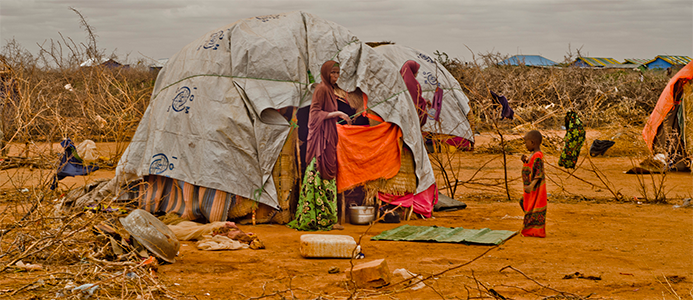EU provides initial €171 million in humanitarian aid for Greater Horn of Africa region

People in the Horn of Africa are facing mounting humanitarian needs as the region is plagued by multiple conflicts, climate extremes and economic shocks. Around 65 million are estimated to be in immediate need of assistance.
The EU announced today an initial allocation of €171 million in humanitarian aid to the region. This funding is in addition to €72 million already announced for Sudan. Overall, the total initial allocation for humanitarian aid to the Greater Horn of Africa in 2024 is €243 million.
The funding will support humanitarian projects in:
- Djibouti (€500,000),
- Ethiopia (€38 million),
- Kenya (€11.5 million),
- Somalia (€37 million),
- South Sudan (€49.5 million), and
- Uganda (€27.5 million).
A further €7 million will be allocated to disaster preparedness programmes across the region.
Main priorities for EU funding are (i) addressing the acute food and nutrition crisis in the region, (ii) improving access to basic services, (iii) providing education, (iv) protection to children in humanitarian crises, and (v) setting up systems to help anticipate the impact of disasters through contingency planning and early action.
Commissioner for Crisis Management, Janez Lenarčič, stressed: “Multiple drivers of humanitarian needs in the Greater Horn of Africa continue to push vulnerable people to the brink. The funding announced today is a reflection of EU solidarity with the people in the region facing the most acute needs. It is intended to save lives and also help communities facing recurrent crises to build up resilience.”
Background
The acute food and nutrition crisis in the Greater Horn of Africa has a devastating impact on tens of millions of vulnerable people. At the same time, there is large-scale forced displacement, both within countries and across borders. Uganda, Sudan and Ethiopia host the highest numbers of refugees in Africa.
Displaced populations continue to be highly dependent on external assistance for their survival. At the same time, returnees face significant obstacles and often do not benefit from minimal conditions of safety and security. The region is also grappling with the impact of climate shocks and El Nino, oscillating between extremes especially in some parts of Ethiopia and Somalia, from a prolonged drought to floods.
The humanitarian situation in Ethiopia continues to be characterised by multiple and often overlapping crises driven by conflicts, climate hazards, epidemics and the macro-economic situation. According to the Global Humanitarian Overview, there are 20 million People in Need in Ethiopia.
The legacy of the northern conflict requires priority attention. A scale-up of reconstruction and resilience-building actions is urgently needed. The conflicts in Amhara and Oromia are driving up humanitarian and protection needs. Violations of International Humanitarian Law (IHL) are being reported and access for humanitarian partners is constrained.
Cycles of drought and floods continue to affect different parts of the country, eroding people’s coping strategies and increasing their hardships. There are close to 3.5 million IDPs and more than 970,000 refugees, including recent influxes from Sudan, who require humanitarian relief and protection.
Kenya is now hosting close to 700,000 refugees and asylum seekers, with the government moving towards an integrated settlement policy – with refugees and hosts communities having equal access to services.
EU support will focus on the provision of basic services and multi-purpose cash assistance to address the basic and protection needs of the most vulnerable refugees and asylum seekers,
In Somalia, millions of people were already displaced before the onset of the drought and more have been forced to do so by drought, floods, conflict and insecurity to reach 3.8 million internally displaced. There are challenges in reaching communities.
4.3 million people – almost 1/4 of the population – remain acutely food insecure. An estimated 1.5 million children under the age of 5 are estimated to suffer from acute malnutrition.
EU humanitarian funding will focus on life-saving activities for populations recently displaced by acute crises, those in hard-to-reach areas and those exposed to catastrophic or very high levels of food insecurity and epidemic outbreaks.
In South Sudan, about 20% of the population is currently displaced due to continued conflict, intercommunal violence and non-receding flooding.
EU support will focus on lifesaving interventions, notably in case of new violence-related displacements (including the consequences of the conflict in Sudan), epidemic outbreaks, natural hazards and climate shocks, targeting the most vulnerable.
Uganda is Africa’s largest refugee-hosting country with close to 1.6 million refugees, including more than 926,000 from South Sudan. Every month, thousands of new refugees fleeing conflicts and natural hazards mainly in the Democratic Republic of the Congo and South Sudan are increasing the pressure on the Ugandan refugee-hosting model.
EU support will prioritise life-saving assistance to the most vulnerable refugees and their host communities, with continuous efforts to meet their basic and protection needs
